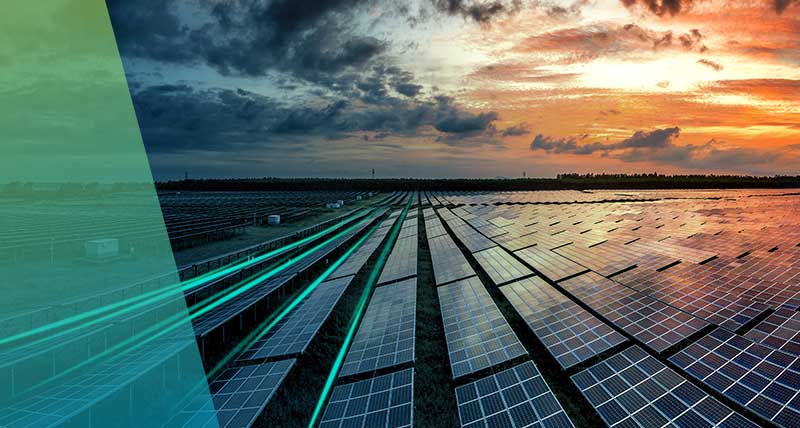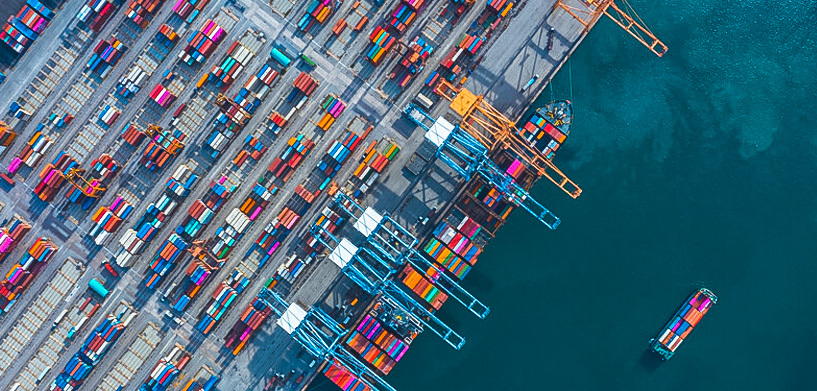Countries are defined by culture, trade, laws and borders. Securing these is becoming more difficult for governments to undertake, with greater impact due to malicious activities. In this blog, we’ll look at the issues of migration, border incursions, shipping and disruptions to undersea assets. We’ll also explore how defence modernisation strategies, including surveillance, are necessary.
Need for border security in EMEA
With a population of over 2 billion people living in more than 115 countries and territories, the region of Europe, Middle East and Africa (EMEA) has plenty of potential conflict points. There are various reasons for these incidents to occur, as discussed later, and they can differ in being localised or dispersed along borders. Government and international agencies are tasked with border surveillance, often related to movements of people, goods and information. Whilst the legal movement of these can generate income for governments and benefit countries, illegal activities usually cost a disproportionate amount to resolve or deter.
There has been illegal migration driven by economic factors for centuries, alongside legal migration. The latter has been positively impacted by initiatives such as the Schengen area covering countries of the European Union. However, with other reasons for migration growing in influence, such as conflict and climate change, the illegal movement of peoples is on the rise, nearing 900,000 asylum claims annually. The routes taken by these migrants coalesce the closer to EU they get, generating hotspots for authorities to police. This cross-border traffic has prompted the construction of over 1000km of border fences, with many built in the past decade. The pattern is repeated across Africa and the Middle East, with some hard borders being enhanced with EU help.
Border surveillance needs
Country borders are also breached by military incursions carried out by militant groups, terrorist organisations and state forces. Overall, the monitoring of borders requires a persistent surveillance of a long corridor, looking for movements within the area. The width of the corridor will vary depending on the terrain either side of the border, the likelihood of an attempted crossing in any section of the border and the means of crossing the border. This includes surface, sub-surface and airborne attempts, needing different monitoring techniques.
Border surveillance technology encompasses a range of systems and techniques used to monitor and secure borders, ranging from traditional methods like radar and cameras to more advanced technologies like RF surveillance and integrated sensor networks. These systems are designed to detect, track and potentially intercept threats such as illegal immigration, smuggling and terrorism.
Maritime surveillance needs
This is quite different to monitoring borders due to the vast, featureless areas of sea that surround EMEA. With a fifth of its population living near the coast, there is a long maritime history in the EMEA region both for trade and conflict. In addition to securing the international borders out to sea, there are the thousands of ships active at any one time around EMEA transporting people and goods, both legally and illegally. There are the increasingly important and vulnerable fixed assets above and below the water surface, which are both targets of sabotage and obstacles to shipping. With the busiest shipping lanes in the world also tending to be some of the narrowest, surveillance of the coastal areas on land is also needed to secure shipping, as demonstrated by the Houthi attacks on vessels passing through the Bab al-Mandab Strait into the Red Sea.
With over 10% of global trade navigated via the Suez Canal, any disruption to traffic will result in a large economic cost. The six-day blockage caused by the jammed Ever Given container ship meant that 400 other ships were delayed in their journeys and halted approximately €9 billion in trade per day. Every ship can be carrying tens of thousands of ISO containers, with each one equivalent to a lorry load of goods. So, whilst the incident was not due to malicious actions, the temptation to strike a soft target that could quickly affect a very large population of consumers is an attractive tactic for groups wishing to highlight their cause.
Subsea cable protection
The relevance of subsea cables to everyday life and businesses around the globe has increased drastically with the widespread use of the internet and inter-country commercial activities; 99% of international communications and internet traffic uses subsea cables at some point. Even manufacturing plants are taking or placing orders for components via the internet. There are hundreds of subsea cables around EMEA, with 35% of all subsea cables in the world coming ashore in western Europe alone. As with many underground networks, the exact locations of the undersea cables are not known, meaning that any monitoring of them for damage is either specific to a very small area or spread over a very large area. With simple attacks on the cables being carried out in relatively shallow waters by hostile ships dragging anchors, the prevalence and impact of incidents will no doubt increase. The undersea energy network, transporting gas and electricity, is also prone to such attacks, as the Nord Stream pipeline attacks, damaging three of the four Nord Stream 1 and 2 pipelines in September 2022, demonstrated.
As maritime surveillance covers a large area, sensors such as satellite-based radar, or optical sensors are used. There is also the active (Automatic Identification System (AIS) which all ships over 300 gross tonnes are required to transmit; this can be electively disabled though, meaning some ships are “dark” and in the unofficial shadow fleet.
Multi-domain operations
The issues of migration, border incursions, shipping and disruptions to undersea assets all have multiple effects on the populace of countries, whether the victims or the aggressors. Similarly, the policing and monitoring, deterrence and response to these issues come from military and civilian agencies, dictated by authorities and roles. The concept of multi-domain operations (MDO) includes military and non-military agencies, with an integrated approach to operations across all domains, being land, air, sea, space and cyberspace. The intent of MDO is that each agency is working toward a common goal and doing so in unison with partners. This requires good communications, timely sharing of data and planning and execution of operations.
Looking ahead
Our subsequent blogs will look at how modern technology is being used in border security, maritime surveillance and MDO. For example, to enable MDO, technology eases collaboration, fusing data from various sensors across domains and simplifying procedures. For border protection, AI can be used to discern between wildlife in a border zone rather than people. Out to sea, the class and identification of a vessel can be determined, enabling tracing of a ship’s routes and ports of call. Simplifying the processes and shortening the time required for decision-making are the outcomes of using technology to receive, analyse, fuse and present information from the many sensors and data sources available.
Richard Goodman is the EMEA defence lead for Hexagon’s Safety, Infrastructure & Geospatial division. He has been with Hexagon for more than 20 years and in the geospatial industry for almost 30. He has wide-ranging experience supporting different government and defence user groups and organisations and helps customers evolve their use of digital geospatial data through management, delivery and workflows.

















